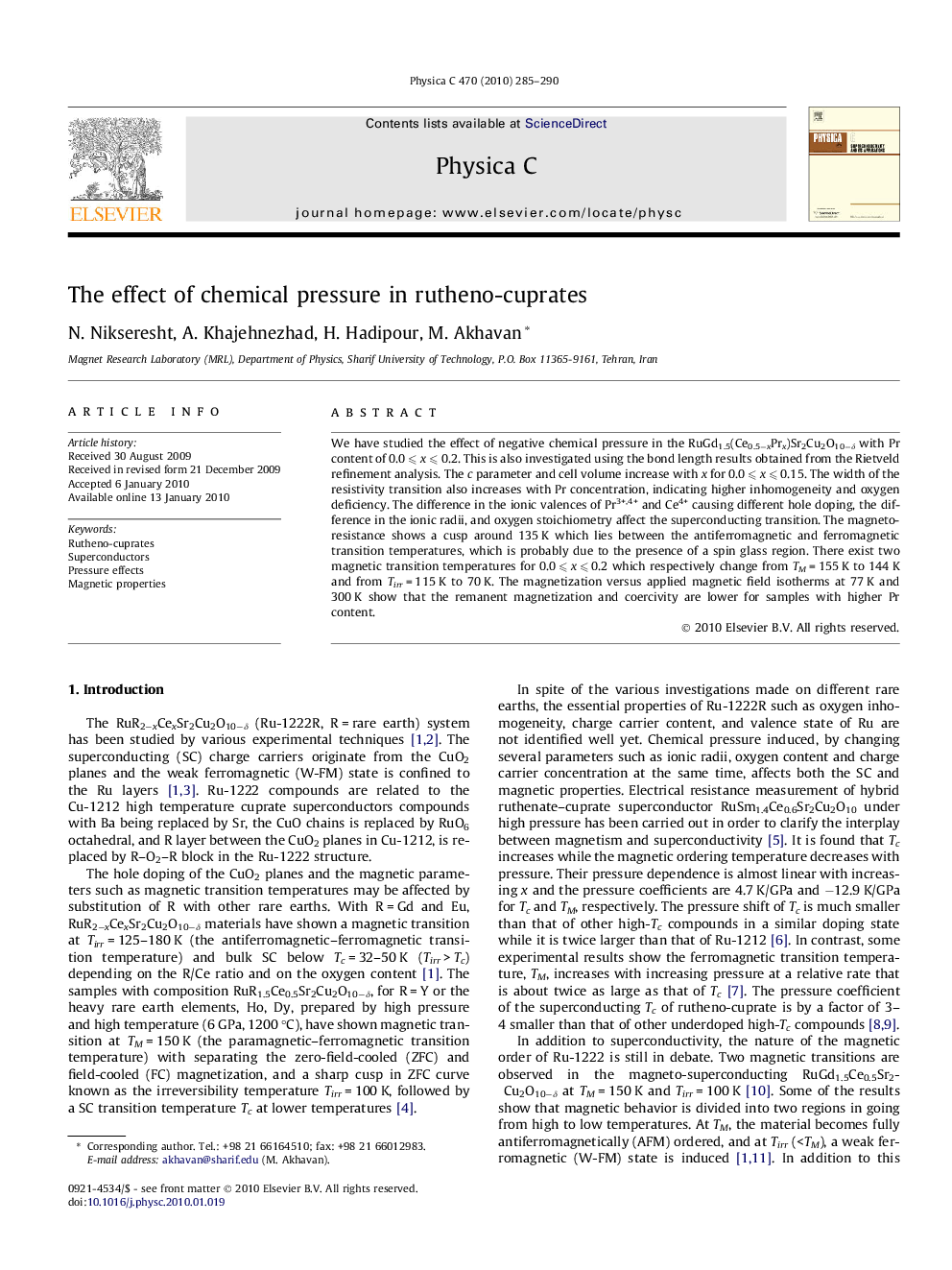| Article ID | Journal | Published Year | Pages | File Type |
|---|---|---|---|---|
| 1819147 | Physica C: Superconductivity and its Applications | 2010 | 6 Pages |
Abstract
We have studied the effect of negative chemical pressure in the RuGd1.5(Ce0.5âxPrx)Sr2Cu2O10âδ with Pr content of 0.0 ⩽ x ⩽ 0.2. This is also investigated using the bond length results obtained from the Rietveld refinement analysis. The c parameter and cell volume increase with x for 0.0 ⩽ x ⩽ 0.15. The width of the resistivity transition also increases with Pr concentration, indicating higher inhomogeneity and oxygen deficiency. The difference in the ionic valences of Pr3+,4+ and Ce4+ causing different hole doping, the difference in the ionic radii, and oxygen stoichiometry affect the superconducting transition. The magnetoresistance shows a cusp around 135 K which lies between the antiferromagnetic and ferromagnetic transition temperatures, which is probably due to the presence of a spin glass region. There exist two magnetic transition temperatures for 0.0 ⩽ x ⩽ 0.2 which respectively change from TM = 155 K to 144 K and from Tirr = 115 K to 70 K. The magnetization versus applied magnetic field isotherms at 77 K and 300 K show that the remanent magnetization and coercivity are lower for samples with higher Pr content.
Related Topics
Physical Sciences and Engineering
Physics and Astronomy
Condensed Matter Physics
Authors
N. Nikseresht, A. Khajehnezhad, H. Hadipour, M. Akhavan,
